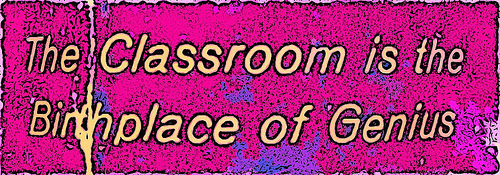This originally appeared on my personal blog 6/29/08 as a post titled “First Impressions and Being All Artsy Fartsy.” I am reposting it again below because I think the connections we make with our students are extremely important, and there is no better way to connect than with a strong first impression. This, to me, is a strong first impression. Can you imagine the joy of a parent finding something like this video posted on your classroom blog showing just how much you are willing to give to their children in the coming year? It makes a very powerful statement. Enjoy.
Many folks like to introduce themselves at the beginning of the school year sharing who they are and what their philosophies are for the classroom learning environment. Kids just love this part as well (yeah right).
This is the most painful part of the year for me. At the elementary level when I taught first grade, they were zoned out from me within minutes. They just wanted to hit the centers I had set up. At the secondary level in the middle school classrooms, they sat politely because they knew the drill. First five or ten minutes of each new class was the “Hi, I’m Mr. Floyd, and….” part of the class. Boring. I try. Lord knows that. I just do not have the artsy fartsy bones in me.
Then, I come across folks like Beau Bergeron. This kid (23 years young) has a wonderful sense of conversation. I am more than happy to learn from those younger than me when they are so dadgum (Texas term) creative. I guess I can blame testing for my lack of creativity since it all started when I was in school (thanks H. Ross Perot), but probably not. Anyway, I digress. Take a look at what Beau has created below and enjoy. Most of all, take some time and think through the first impression YOU are going to create when the kids and parents come this year. I realize James Dobson says, “Don’t smile until Christmas.” But what impression do you want the kids to get about what your expectations are? I want to set the bar high and have them live up to them. When they see I put more energy into the classroom than I have to, hopefully they will do the same. It’s worth a try. Realize what you do speaks so much more powerfully than what you say. First impressions. Then, when you are ready to work on your own, shoot me an email. Let me know what I can do to help you create yours.
Enjoy Beau’s mind and imagination. PS – Realize he played this video on the white shirt he wore to the event.

